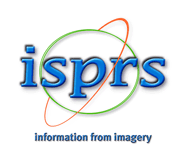State Covariance Based Spatio-Temporal Trajectory Alignment for VIO Systems
Keywords: Trajectory alignment, state covariance, visual-inertial odometry, spatio-temporal alignment, pose transformation
Abstract. With the growing interest in robotics and autonomous vehicles, visual-inertial odometry (VIO) in SLAM techniques have become increasingly important for estimating a robot’s trajectory using visual and inertial data. Evaluating the accuracy of a VIO trajectory estimate typically requires aligning it with a reference trajectory, where the goal is to find a transformation that minimizes the discrepancy between estimated and reference poses. However, existing methods often overlook the state covariance of the estimated trajectory or rely solely on manufacturer specifications, without considering the covariance of VIO estimation. As a result, the accuracy of the aligned trajectory may not be truly reflected, as the alignment process minimizes global discrepancies rather than prioritizing state pairs with higher confidence. This paper investigates the impact of state covariance of estimated trajectory on spatio-temporal trajectory alignment. To validate our approach, we use various open-source datasets that exhibit different state covariance behaviors and conduct comprehensive statistical analyses. The results indicate that the proposed method improves the precision and internal reliability in estimating alignment parameters. Additionally, the resulting a-posteriori variance factor of unit weight from the proposed method reflects a better-calibrated stochastic model and can serve as an indicator of state covariance estimation quality in VIO systems.





